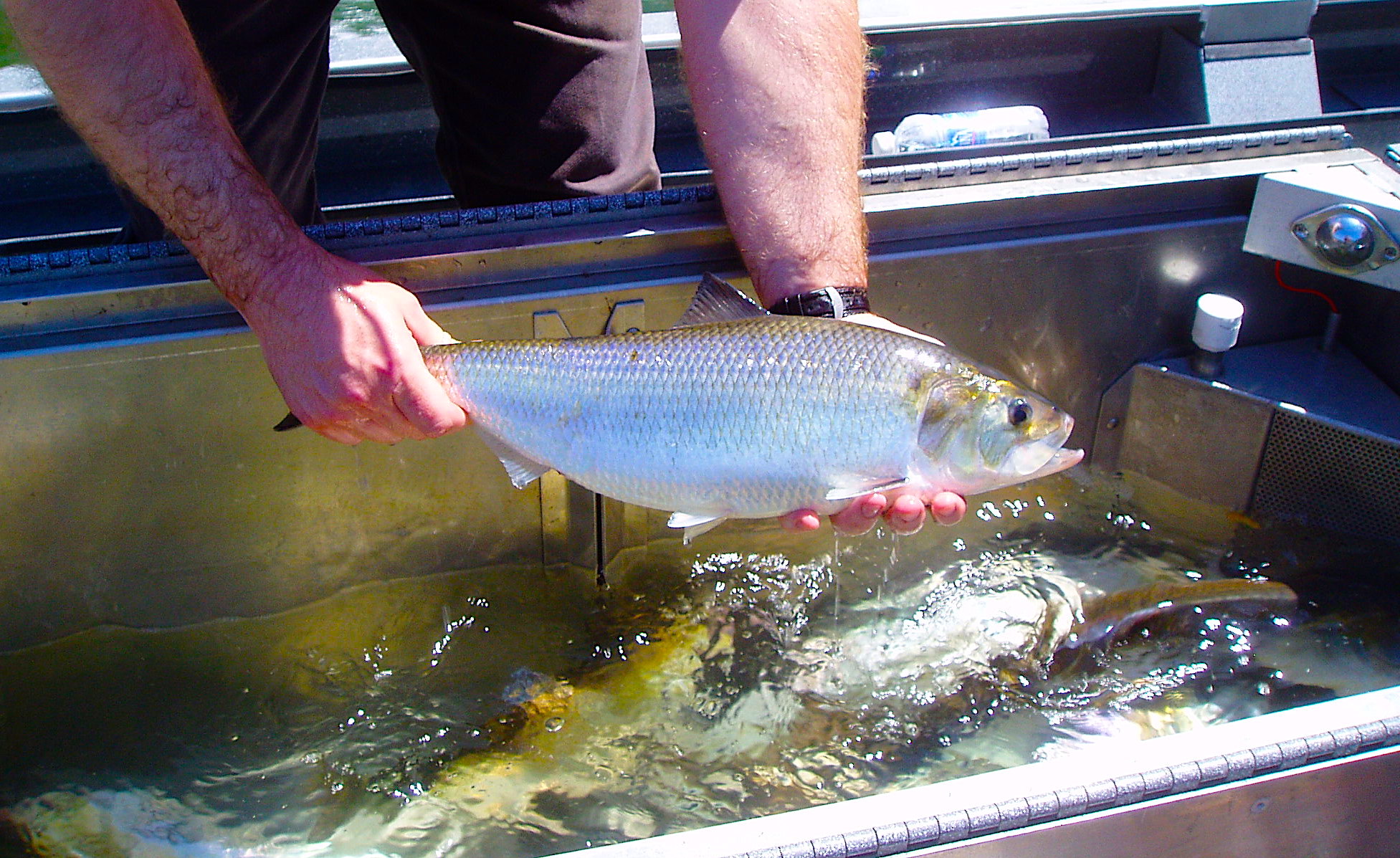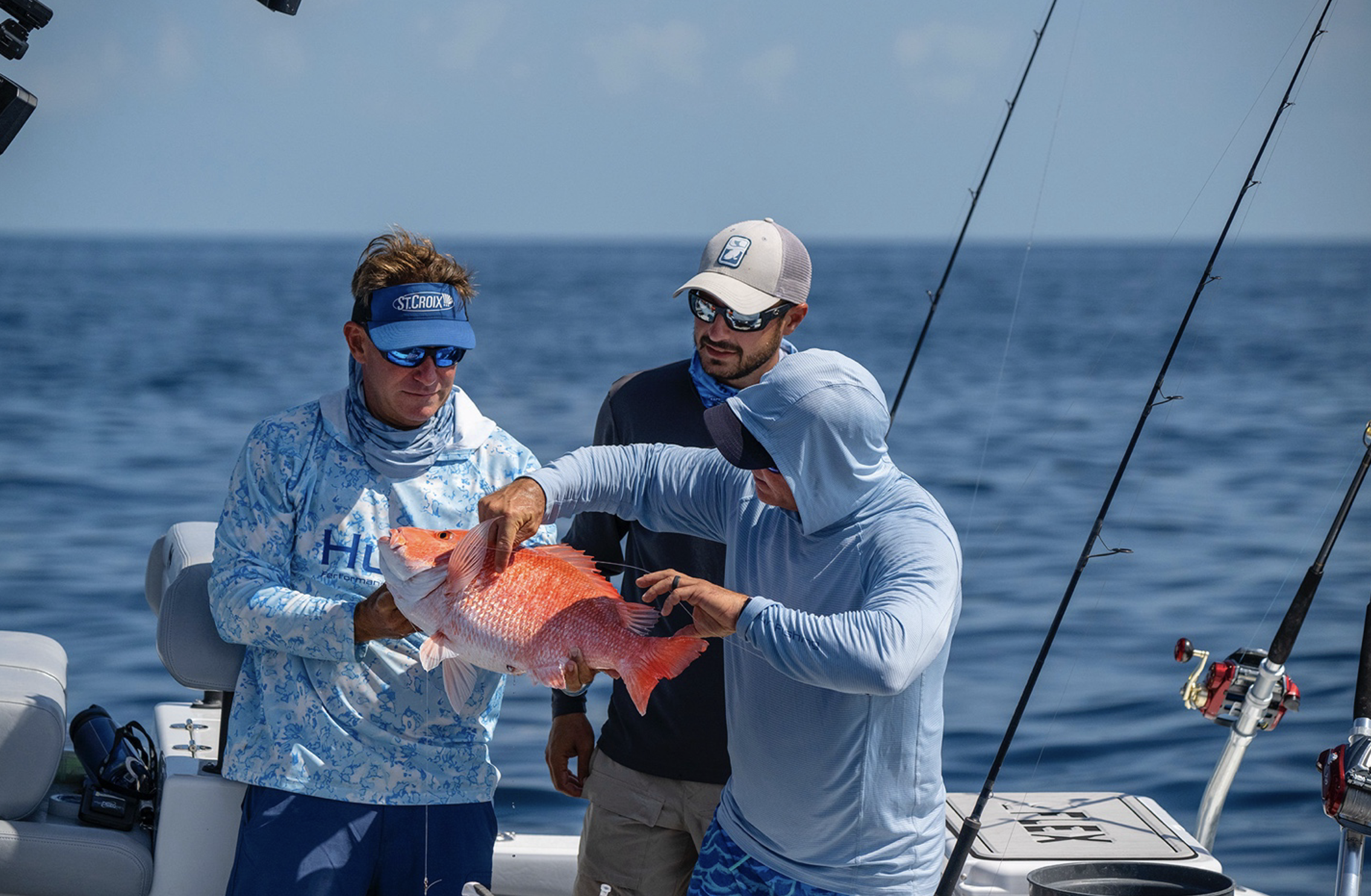How Will Climate Change Affect Spawning American Shad?

By the 2090s, the spawning season for American shad could begin 12 days earlier.
American shad are on the move right now. These fish migrate down rivers to the ocean and south during the fall and winter.
Historically, American shad have supported important sport and commercial fisheries along the Atlantic coast. However, overfishing and the construction of dams, which block spawning migrations, have depleted many shad populations. Federal and state resource agencies are working to restore American shad to many North Carolina rivers throughout the state.
Recreational and commercial fishing, pollution, habitat loss, and industrial water sewage also impact “anadromous” species of fish, which spend most of their life cycle in saltwater but move upriver from the sea to lay their eggs.
But what role is climate change having on the life cycles of some of our anadromous species?
Warmer water plays a significant role in the life cycles of aquatic fishes, as water temperature can serve as one environmental cue for spawning to begin. Will warmer temperatures lead to earlier-than-normal spawning in shad?
Research Need
The American shad, an anadromous fish whose populations in the Hudson River Estuary in New York have dramatically decreased, are very important to both commercial and recreational fishing. With stocks in the Hudson River and other locations along much of the U.S. East Coast becoming so low, there is concern that these population numbers will not recover naturally.
Researchers want to know whether warmer temperatures are affecting the reproductive cycle of the American shad. And, if so, how so?
What did they study?
To understand the effects of water temperature on the reproductive cycle of the American shad, researchers collected and analyzed long-term temperature data from Poughkeepsie Water Treatment Facilities, daily air temperature data from the North American Land Data Assimilation System, and fish egg count data from the Hudson River Monitoring Program.
Their results made it possible to develop models to project future temperature changes in the Hudson River estuary to help predict the spawning life cycle of the American shad and other fish species.
What did they find?
Ovary development increased in the American shad as water temperatures increased. The onset of spawning seasons appears closely linked to mean and peak June water temperatures in the study area. With warming waters, the spawning season for American shad is predicted to begin 12 days earlier by 2090 and be 3 days shorter overall.
Anything else?
The Hudson River Fisheries Unit has developed an American shad recovery plan. With new practices, the closure of the Hudson River American Shad fishery, and habitat restoration, Hudson River Fisheries Unit predicts that American shad numbers will be in a steady state of recovery over the next several decades.
So what?
Because these results indicate that the rate at which ovaries mature in American shad increases as water temperatures rise, American shad will lay their eggs earlier in the year as waters continue to warm.
Researchers predict that water temperatures in the Hudson River will continue to increase over the next century and acknowledge that factors not examined here – like changes in availability of zooplankton (prey for American shad), or the introduction of new invasive species – may also alter these model results.
Projection models from this study will help in predicting effects on reproduction and spawning cycles of American shad. Furthermore, these modeling systems will be essential for understanding the current and future effects of climate change on other marine fishes.
Reading
Nack, Christopher C., Dennis P. Swaney and Karin E. Limburg. 2019. Historical and Projected Changes in Spawning Phenologies of American Shad and Striped Bass in the Hudson River Estuary. Marine and Coastal Fisheries. Volume11, Issue3, Pages 271-284. https://doi.org/10.1002/mcf2.10076
Funding for this project is provided by the World Climate Research Programme’s Working Group on Coupled Modelling, U.S. Department of Energy’s Program for Climate Model Diagnosis and Intercomparison, and the Hudson River power‐generating companies.
Summary compiled by Lauren Pharr
Lead photo courtesy of US Fish & Wildlife Service
The text from Hook, Line & Science is available to reprint and republish, but only in its entirety and with this attribution: Hook, Line & Science, courtesy of Scott Baker and Sara Mirabilio, North Carolina Sea Grant. HookLineScience.com
- Categories:



